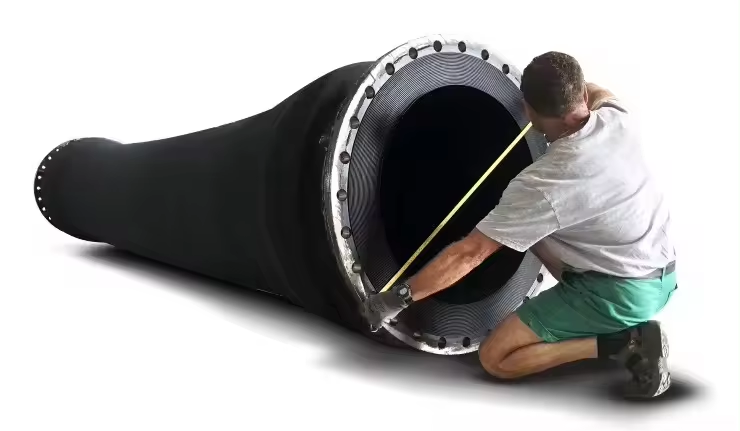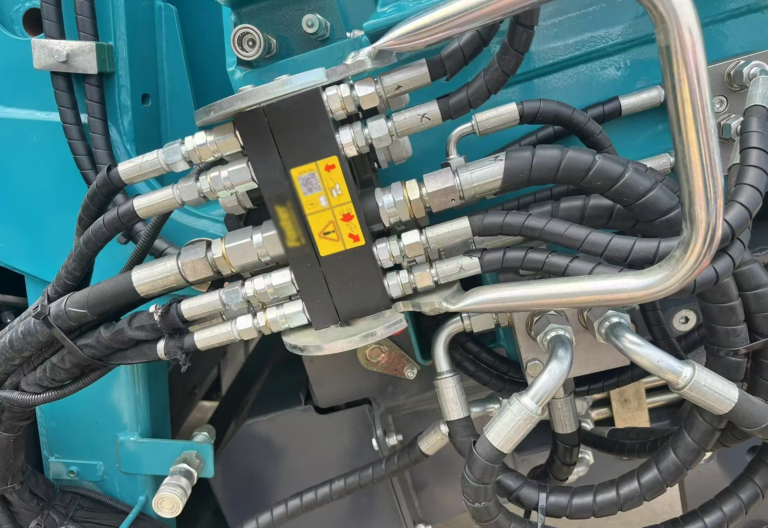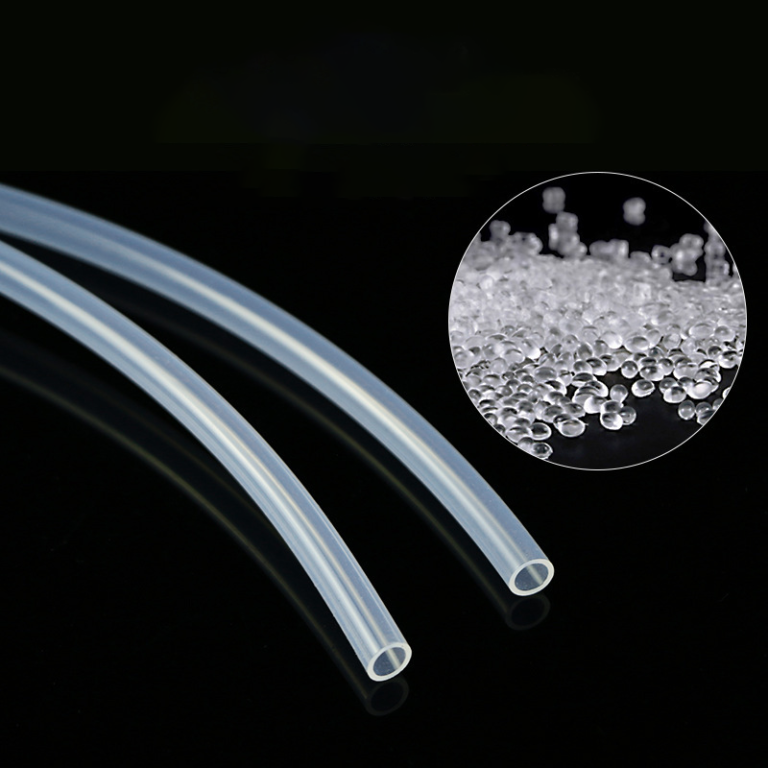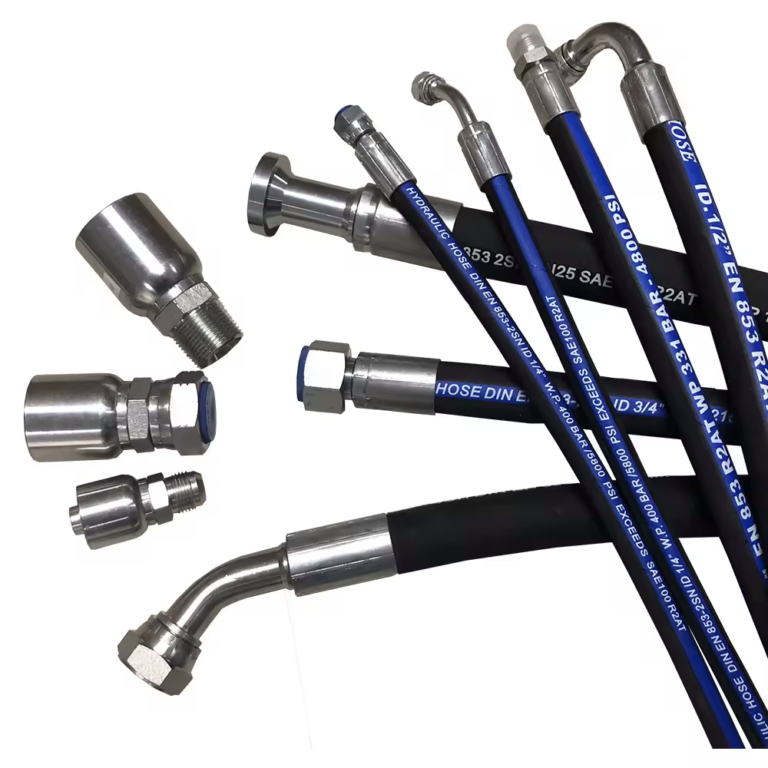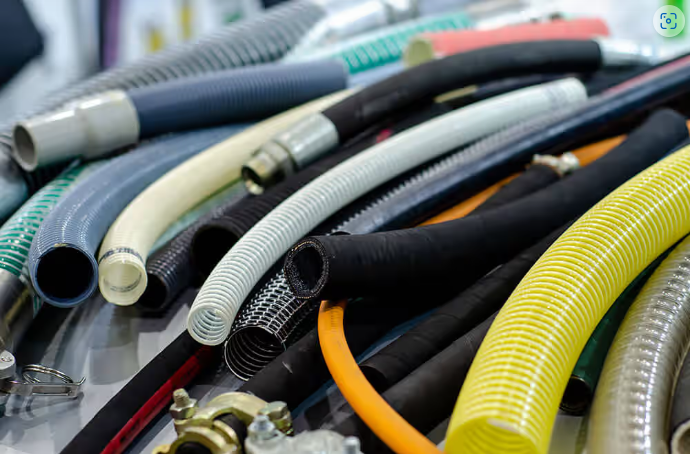Introduction to the advantages and disadvantages of various rubber properties and their resistance to media
2. Perfluororubber (FFKM):
All hydrogen atoms in the monomer are replaced by fluorine atoms, which gives perfluororubber unique properties.
Excellent corrosion resistance, capable of withstanding almost all chemicals, including acids, bases, ketones, esters, ethers, aldehydes, amines, alcohols, strong oxidants, etc.
Excellent heat resistance, with a maximum long-term temperature resistance of 316 ℃.
3. Fluorosilicone rubber e (FSI)
Fluorosilicone rubber, also known as gamma trifluoropropyl methyl polysiloxane, is generally modified by 0.2% to 0.4% ethylene siloxane copolymerization in its molecular chain. It is a colorless, transparent, high viscosity, and plastic linear polymer compound. The main chain is composed of silicon and oxygen atoms, and the side groups connected to silicon are methyl, ethylene, and trifluoropropyl. The molecular weight ranges from 500000 to 800000. Combined with various additives, it can be mixed and refined into homogeneous rubber materials. Under the action of organic peroxides, it can be vulcanized into various elastic rubber products. In addition to the characteristics of general silicone rubber, it also has excellent resistance to aviation fuel oil, hydraulic oil, engine oil, chemical reagents and solvents.
Suitable for making aircraft fuel tank sealing materials, engine accessories, fuel oil hoses, and oil pressure system sealing rings
4. Tetrafluoroelastomer (FEPM)
Tetrapropylene fluororubber is a copolymer of tetrafluoroethylene and propylene through lotion polymerization. It has excellent high temperature aging resistance, acid and alkali resistance, weather aging resistance, excellent high temperature steam resistance, and unique compression set resistance. Tetrafluoroelastomer has relatively good resistance to lubricating oil, hydraulic oil, engine oil, and brake fluid, except for its inferior fuel resistance compared to 26 type fluororubber. The biggest disadvantage of tetrafluoroelastomer is its poor cold resistance.
Temperature range: 0 ℃~230 ℃
5. Silicone Rubber (Q)
Silicone rubber can be divided into heat cured and room temperature cured types. Hot vulcanization types are further divided into methyl silicone rubber (MQ), methyl vinyl silicone rubber (VMQ, with the highest usage and product grade), methyl vinyl phenyl silicone rubber PVMQ (low temperature and radiation resistance), as well as other types such as silicone rubber and fluorosilicone rubber. MQ is a colorless, transparent, highly viscous, and plastic linear polymer compound. The main chain is composed of silicon and oxygen atoms, and the side group connected to silicon is a methyl group. The molecular weight ranges from 500000 to 800000. VMQ is a colorless, transparent, highly viscous, and plastic linear polymer compound. The main chain is composed of silicon and oxygen atoms, and the side groups connected to silicon are methyl and vinyl. The molecular weight ranges from 500000 to 800000. PVMQ is obtained by introducing diphenylsiloxane or methylphenylsiloxane chains into the molecular chains of vinyl silicone rubber.
Temperature range: -60 ℃ (special up to -115 ℃) to 204 ℃ (special up to 260 ℃)
6. Chloroprene rubber (CR)
Chloroprene rubber is polymerized from chloroprene monomer, which is a polar rubber between saturated and unsaturated. The vulcanized rubber has relatively good ozone resistance (better than NR, SBR, NBR, worse than EPDM, IIR), weather resistance, chemical corrosion resistance and aging resistance. It also has good mechanical properties, flame retardancy and good wear resistance, low-temperature elasticity, good torsion resistance, resistance to dichlorodifluoromethane, ammonia and other refrigerants, resistance to dilute acid, resistance to silicone ester lubricating oil, but not resistance to phosphate ester hydraulic oil. It is easy to crystallize and harden at low temperatures, poor storage stability, and large expansion in mineral oil with low aniline point.
7. Polyurethane rubber
It is polymerized from polyester (or polyether) and diisocyanate compounds.
Temperature range: -40 ℃~100 ℃, short-term up to 120 ℃
8. Acrylic Rubber (ACM)
Acrylic rubber is an elastic material obtained by copolymerization of acrylic ester as the main monomer, with a saturated carbon chain as the main chain and polar ester groups as the side groups. Due to its unique structure, it possesses many excellent properties such as heat resistance, aging resistance, oil resistance, ozone resistance, UV resistance, etc. Its mechanical and processing properties are superior to fluororubber and silicone rubber, and its heat resistance, aging resistance, and oil resistance are superior to nitrile rubber. ACM is widely used in various high-temperature and oil resistant environments, and has become a sealing material that the automotive industry has focused on developing and promoting in recent years. It is mainly used as various heat-resistant and oil resistant sealing rings, gaskets, and oil seals for automobiles and locomotives.
Temperature range: -30 ℃~150 ℃, short-term up to 175 ℃
advantage:
·Good airtightness
·Good ozone resistance
·Excellent oil resistance
·Good resistance to UV discoloration
·Good heat aging resistance
·High temperature resistant oil seals, crankshafts, valve stems, cylinder gaskets, and hydraulic oil pipelines for automobiles
Disadvantages:
·Poor processing performance, adhesive material easily sticks to rollers
·Poor cold resistance
·Not resistant to water vapor, acid-base, salt solutions, and organic polar solvents
·Poor elasticity, wear resistance, and electrical performance at room temperature
Applicable medium:
·Mineral oil (engine oil, gear oil, ATF oil)
Not applicable medium:
·Aromatic hydrocarbons, chlorinated hydrocarbons
·Hot water, steam
·Acid, alkali, amine
·Ethylene glycol based brake fluid
9. Ethylene acrylate rubber (AEM)
Ethylene acrylate rubber is divided into binary rubber and ternary rubber. Binary rubber is composed of ethylene (E)/methyl acrylate (MA), while ternary rubber is composed of E/MA/monomers (CS) that provide vulcanization positions. Binary rubber can only be vulcanized with peroxides, while ternary rubber can be vulcanized with amine vulcanizing agents due to the presence of a third monomer that provides vulcanization positions. When used for cable continuous vulcanization with high-pressure steam, ternary rubber can also be vulcanized with peroxides. Ethylene acrylate rubber has excellent high temperature resistance, heat resistance to mineral oil, hydraulic oil, weather resistance, and low temperature performance, but is not resistant to low aniline oil and polar solvents.
Temperature range: -30 ℃~150 ℃, short-term up to 175 ℃
advantage:
·Good cold resistance
·Excellent ozone resistance performance
·Good weather resistance
·Good heat aging resistance
·Excellent resistance to compression and permanent deformation performance
·Used for automotive parts, such as front and rear crankshaft oil seals, front and rear spindle oil seals, power steering pump seals, and transmissions
Pump seals, water pump seals, engine valve stem oil seals, CVJ dust covers, and power steering hoses
Disadvantages:
·Poor resistance to fuel C, phosphate hydraulic oil, non mineral brake fluid, esters, ketones, and gasoline
Applicable medium:
·Mineral oil (engine oil, gear oil, ATF oil)
·Ozone
·Oxidizer
Not applicable medium:
·Ketone
·Fuel Oil
·Brake fluid
10. Nitrile rubber (NBR)
Nitrile rubber is a copolymer of acrylonitrile and butadiene, which has excellent resistance to petroleum and non-polar solvents, as well as good mechanical properties. The specific performance mainly depends on the content of acrylic acid in it. Acrylic acid with a content higher than 50% has strong resistance to mineral oil and fuel, but its elasticity and permanent compression deformation deteriorate at low temperatures. Low acrylic acid nitrile rubber has good low-temperature resistance, but reduces its oil resistance at high temperatures.
Temperature range: -25~100 ℃
advantage:
·Good characteristics of oil resistance, water resistance, solvent resistance, and high-pressure oil resistance
·Good compression performance, wear resistance, and tensile strength
·Rubber parts used for making fuel tanks and lubricating oil tanks
·Used for petroleum hydraulic oil, gasoline, water, silicone grease, silicone oil, diester lubricating oil, and glycol based lubricating oil
Rubber parts used in fluid media such as hydraulic oil
Disadvantages:
·Not suitable for use in polar solvents such as ketones, ozone, nitro hydrocarbons, MEK, and chloroform
·Not resistant to ozone, weather, and heat due to air aging
Applicable medium:
·Fatty hydrocarbons (butane, propane), engine oil, fuel, vegetable oil, mineral oil
·HFA, HFB, HFC hydraulic oil
·Low concentration acid, alkali, and salt at room temperature
·Water
Not applicable medium:
·High aromatic hydrocarbon content fuel
·Aromatic hydrocarbons (benzene)
·Chlorinated hydrocarbons (trichloroethane)
·Polar solvents (ketones, acetone, acetic acid, ether)
·Strong acid
·Ethylene glycol based brake fluid
11. Ethylene propylene rubber (EPDM)
Ethylene propylene rubber is made by copolymerization of ethylene and propylene, with no double bonds in the main chain. Therefore, it has excellent heat resistance, aging resistance, resilience, insulation performance, stability, ozone resistance, and low temperature resistance. However, sulfur vulcanization cannot be used. To solve this problem, a small amount of a third component with double bonds can be introduced into the main chain for sulfur vulcanization, resulting in EPDM rubber. Excellent resistance to polar solvents such as alcohols, ketones, ethylene glycol, and phosphate hydraulic oils.
Temperature range: -55 ℃~125 ℃, using organic peroxide sulfurization can reach up to 150 ℃.
advantage:
·Good resistance to weather and ozone
·Excellent water resistance and chemical resistance
·Suitable for alcohols and ketones
·High temperature vapor resistance, low gas permeability
·Sealing components for high-temperature steam environment
·Sanitary equipment seals or parts
·Rubber components of the braking system
·Sealing components for radiator (car water tank)
Disadvantages:
·Not recommended for food use or exposure to aromatic hydrocarbons
Applicable medium:
·Hot water and steam
·Ethylene glycol based brake oil, silicon-based brake oil
·Various organic and inorganic acids
·Detergent, soda, potassium hydroxide
·Phosphate ester hydraulic oil
·Silicone oil and silicone ester
·Multiple polar solvents (alcohols, ketones, esters)
Not applicable medium:
·Mineral oil, fuel
12. Butyl rubber (IIR)
Butyl rubber is a synthetic rubber synthesized by copolymerizing 1% to 3% isoprene and isobutene monomers in a chlorinated methane solution catalyzed by AlCl3, with a small amount of unsaturated groups for sulfurization. Due to the steric hindrance effect of methyl groups, the movement of rubber molecular chains is more difficult than other polymers, resulting in lower gas permeability. Heat resistant, sun resistant, ozone resistant, good electrical insulation, resistant to polar solvents such as alcohols, ketones, esters, etc.
Temperature range: -40 ℃~100 ℃, can reach up to 125 ℃ in a short time
advantage:
·Low gas permeability
·Good weather resistance and ozone resistance
·Resistant to animal and vegetable oils or chemical oxidation
·Rubber parts for vacuum equipment used in the production of chemical resistant drugs
Disadvantages:
·Not recommended for simultaneous use with petroleum solvents, coking coal oil, and aromatic hydrocarbons
Applicable medium:
·Overheated water and steam (121 ℃)
·Ethylene glycol based brake oil contains various organic and inorganic acids
·Salt solution
·Polar solvents (alcohols, ketones, esters)
·Silicone oil and silicone ester
·Ozone resistant, aging resistant, weather resistant
Not applicable medium:
·Mineral oil, ester
·Fuel Oil
·Chlorinated hydrocarbon

